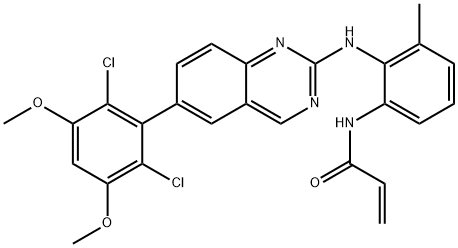SAFETY INFORMATION
| Signal word | Warning |
|---|---|
| Pictogram(s) |
 Exclamation Mark Irritant GHS07 |
| GHS Hazard Statements |
H227:Flammable liquids H315:Skin corrosion/irritation H319:Serious eye damage/eye irritation |
| Precautionary Statement Codes |
P210:Keep away from heat/sparks/open flames/hot surfaces. — No smoking. P264:Wash hands thoroughly after handling. P264:Wash skin thouroughly after handling. P280:Wear protective gloves/protective clothing/eye protection/face protection. P302+P352:IF ON SKIN: wash with plenty of soap and water. P305+P351+P338:IF IN EYES: Rinse cautiously with water for several minutes. Remove contact lenses, if present and easy to do. Continuerinsing. P332+P313:IF SKIN irritation occurs: Get medical advice/attention. P337+P313:IF eye irritation persists: Get medical advice/attention. P370+P378:In case of fire: Use … for extinction. P403+P235:Store in a well-ventilated place. Keep cool. |
COMPUTED DESCRIPTORS
| Molecular Weight | 509.4 g/mol |
|---|---|
| XLogP3 | 6.4 |
| Hydrogen Bond Donor Count | 2 |
| Hydrogen Bond Acceptor Count | 6 |
| Rotatable Bond Count | 7 |
| Exact Mass | 508.1068960 g/mol |
| Monoisotopic Mass | 508.1068960 g/mol |
| Topological Polar Surface Area | 85.4 Ų |
| Heavy Atom Count | 35 |
| Formal Charge | 0 |
| Complexity | 715 |
| Isotope Atom Count | 0 |
| Defined Atom Stereocenter Count | 0 |
| Undefined Atom Stereocenter Count | 0 |
| Defined Bond Stereocenter Count | 0 |
| Undefined Bond Stereocenter Count | 0 |
| Covalently-Bonded Unit Count | 1 |
| Compound Is Canonicalized | Yes |
PRODUCT INTRODUCTION
description
FGFR4 Inhibitor BLU 9931 is an orally bioavailable, selective inhibitor of human fibroblast growth factor receptor 4 (FGFR4), with potential antineoplastic activity. Upon oral administration, FGFR4 antagonist BLU 9931 specifically and irreversibly binds to the cysteine residue at position 552 (Cys 552) that is within the active site of FGFR4. This blocks FGFR4 autophosphorylation and activation of receptor tyrosine kinase activity that would normally occur after binding to its ligand, fibroblast growth factor 19 (FGF19), which both inhibits FGFR4-mediated signaling and leads to an inhibition of tumor cell proliferation in FGF19- and FGFR4-overexpressing cells. FGFR4, a receptor tyrosine kinase, is involved in angiogenesis and in the proliferation, differentiation, and survival of tumor cells. FGFR4 expression is associated with poor prognosis. FGF19 is overexpressed by certain tumor cell types.

